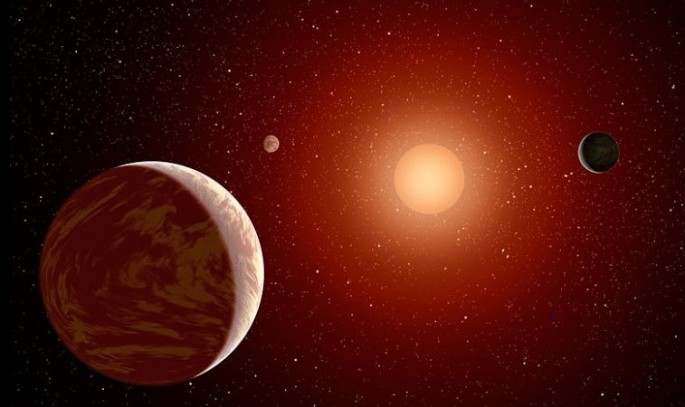Scientists determined to discover intelligent alien life in the universe are directing their efforts at an exoplanet named Wolf 1061c they're convinced might have microbial life and could have an advanced alien civilization, as well.
Wolf 1061c is classified as a super-Earth exoplanet. Wolf 1061c or WL 1061c orbits within the habitable zone of the red dwarf star Wolf 1061 in the constellation Ophiuchus, about 13.8 light years from Earth. This exoplanet is the second-closest known potentially habitable exoplanet to Earth after Proxima Centauri b.
METI or Messaging Extraterrestrial Intelligence has pointed its optical telescope in Panama at Wolf 1061 four times to search for brief laser pulses sent by an alien civilization. And why this dedication to a planet METI believes in all likelihood has microbial life?
METI International President Douglas Vakoch said Wolf 1061c is certainly worth checking for intelligent life. Vakoch said the star is also a high priority on a list of stars METI plans to transmit deliberate signals to by the end of 2018.
"We hope to elicit a response from any extraterrestrials who've been keeping to themselves so far," said Vakoch.
Wolf 1061 will be visible from Panama again at the end of February. Vakoch said METI will take another look with a wider bandwidth system to check frequencies that might have been missed before.
He did, however, note that if there's "life on Wolf 1061c, it's likely to be microbial. So far, we've found no indications of advanced technologies in this promising exoplanet just 14 light years from Earth."
Because it is so close to the star, Wolf 1061c is likely to be tidally locked, which means one side of the planet permanently faces the star while the other side permanently faces away.
The "terminator line" that separates the illuminated side and the dark side could potentially be habitable, and the temperature in this zone could be suitable for liquid water to exist. A much larger portion of the planet could also be habitable if it has a thick enough atmosphere to facilitate heat transfer away from the side facing the star.



























